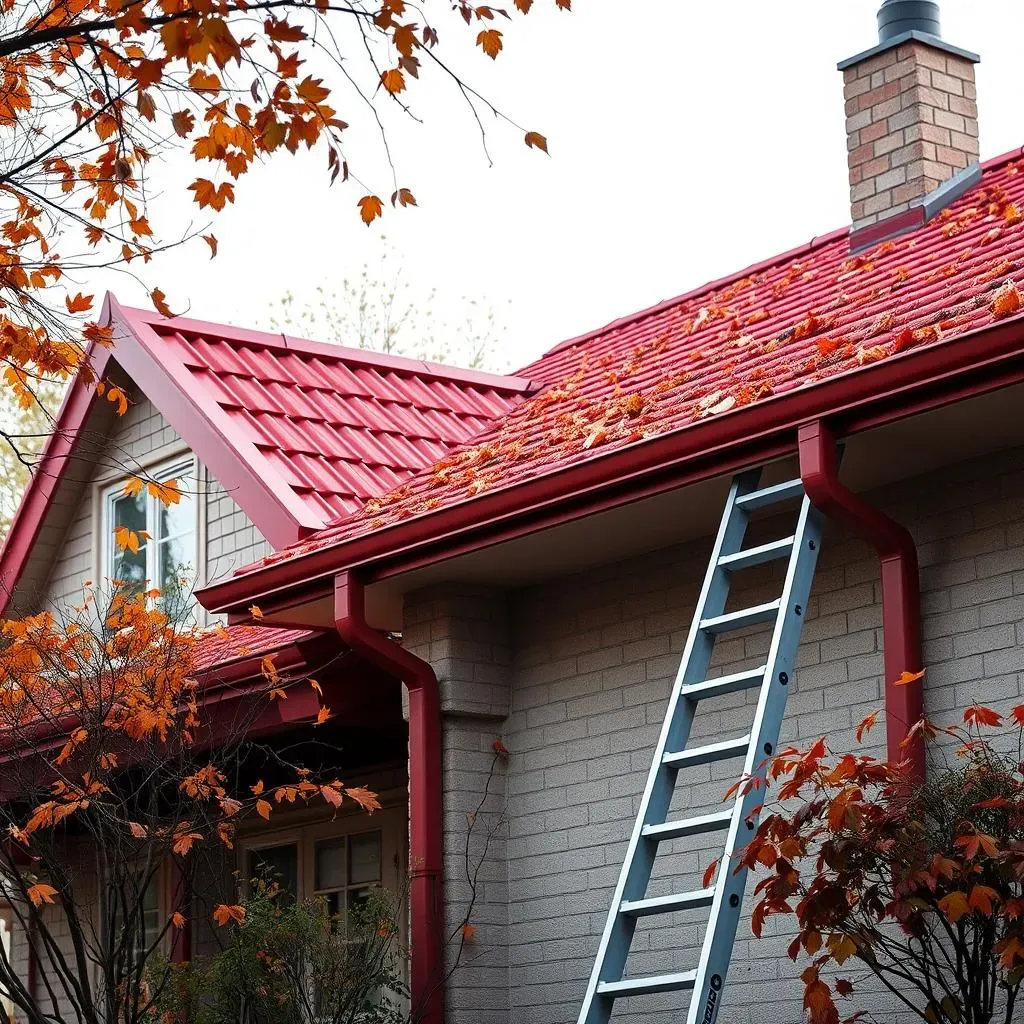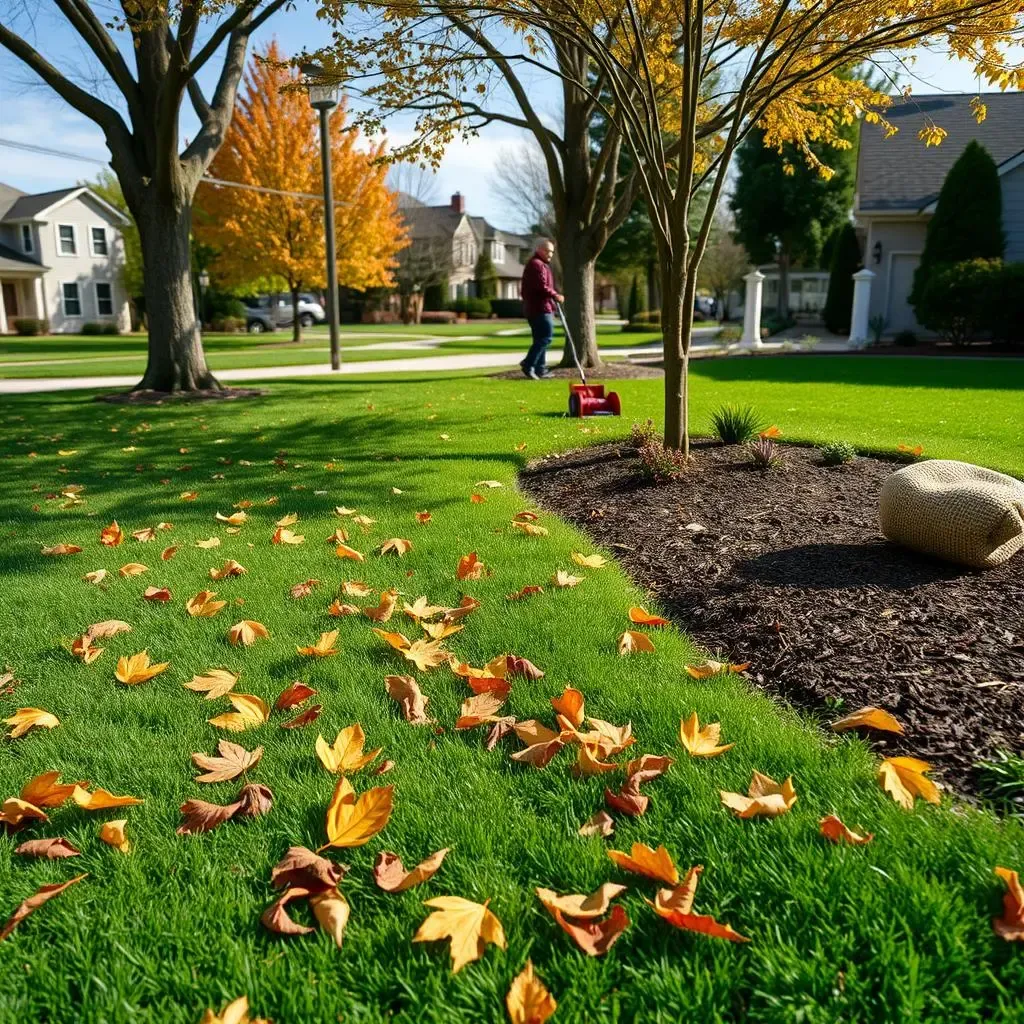Table of Contents
As the leaves change color and a crispness fills the air, it's time to shift our focus from summer fun to fall preparations. And for homeowners, that means tackling the essential task of home maintenance for fall. This isn't just about tidying up; it's about protecting your biggest investment from the harsh realities of winter. This article serves as your comprehensive guide to ensuring your home is snug and secure throughout the colder months. We'll explore the crucial exterior maintenance tasks that prevent costly damage, from inspecting your roof and cleaning gutters to sealing air leaks and protecting vulnerable pipes. Next, we'll shift our attention indoors, providing tips on prepping your heating system, checking smoke detectors, and performing other vital interior maintenance checks. Finally, we’ll cover essential landscaping tasks to prepare your yard for the winter. By following this guide, you'll not only save money on potential repairs but also enjoy peace of mind, knowing your home is ready for whatever the season throws its way. Let's dive in and get your home ready for a cozy, worry-free winter!
Essential Exterior Fall Home Maintenance
Essential Exterior Fall Home Maintenance
Roof Inspection and Repair
Before the first snowflakes fly, give your roof a thorough once-over. Look for missing or damaged shingles, cracks in the flashing around chimneys and vents, and any signs of leaks. A small problem now can become a huge, expensive headache later. Think of it like this: a tiny hole in your roof is like a tiny hole in your boat – eventually, you’ll sink! Addressing these issues early saves you money and potential water damage. For a more comprehensive guide, check out our post on essential home maintenance inspections to prevent future issues.
Don't forget to check your gutters and downspouts! Clogged gutters lead to overflowing water, which can damage your roof, foundation, and even your landscaping. Clearing them out is a simple task, but one that's hugely important. Think of your gutters as your home's drainage system; a clogged system leads to flooding – not good!
- Inspect shingles for damage
- Check flashing around chimneys and vents
- Look for signs of leaks or water stains
- Clean gutters and downspouts thoroughly
Window and Door Sealing
Sealing up air leaks around windows and doors is a simple yet effective way to improve your home's energy efficiency. Think of it like plugging holes in a sieve – you want to keep the heat inside where it belongs, not letting it escape. This will help lower your heating bills, and keep your house warmer and cozier during those chilly winter nights. For more details on tackling home maintenance throughout the year, check out our home maintenance by month guide.
Use weatherstripping or caulk to seal any gaps or cracks. This is a relatively inexpensive project that can make a big difference in your comfort and energy costs. Remember, a little preventative maintenance goes a long way! This seemingly small task can significantly reduce drafts and make your home much more energy-efficient. It's like giving your home a cozy hug to keep it warm all winter long.
Area | Material | Instructions |
|---|---|---|
Windows | Weatherstripping | Apply along window frames |
Doors | Caulk | Fill gaps around door frames |
Protecting Your Home's Interior for Fall
Protecting Your Home's Interior for Fall
Heating System Checkup
Before the cold sets in, give your heating system a once-over. Change or clean your furnace filter – a dirty filter makes your furnace work harder and less efficiently, costing you more money. It's like trying to run a race with weights on your ankles – you'll get there, but it'll be harder and slower. A clean filter ensures optimal airflow and efficiency, keeping your home warm and your energy bills manageable. For more expert tips, check out our guide on HVAC maintenance.
Scheduling a professional inspection is a smart move, especially if your furnace is older. A pro can identify potential problems before they become major, costly repairs. Think of it as preventative medicine for your home's heating system – a small investment now saves you a lot of trouble later. This is especially crucial for older systems which might have hidden problems.
- Change or clean furnace filter
- Schedule a professional inspection
- Check thermostat functionality
Protecting Pipes from Freezing
Frozen pipes are a nightmare, leading to costly repairs and potential water damage. Insulating exposed pipes, especially those in unheated areas like basements or garages, is crucial. Think of it like wrapping your hands with a scarf on a cold day – you're adding a layer of protection against the elements. This simple step can prevent pipes from freezing and bursting, saving you from a plumbing disaster.
Letting cold water drip from faucets served by exposed pipes can also help prevent freezing. It's a small inconvenience that provides a significant safeguard against frozen pipes. This simple trick keeps a constant flow of water moving, preventing freezing in vulnerable pipes. For more comprehensive home maintenance advice, explore our complete home maintenance guide.
Location | Protection Method |
|---|---|
Exposed Pipes | Insulation |
Exterior Faucets | Disconnect hoses, drain lines |
Safety First!
Fall is a great time to check your home's safety features. Test your smoke detectors and carbon monoxide detectors – these are critical for your family's safety. Think of them as your home's early warning system, giving you precious time to react in an emergency. Replacing batteries or the whole unit is a small price to pay for peace of mind.
Ensure that your fire extinguishers are fully charged and readily accessible. A fire extinguisher is a vital part of your home's safety plan; knowing where it is and how to use it is crucial. Knowing where to find it and understanding its proper use can be the difference between a minor incident and a major catastrophe. Regularly reviewing your home's escape routes is also a good idea – practice makes perfect, even when it comes to emergency exits. For more detailed home safety tips, please see our page on essential home maintenance inspections.
- Test smoke and carbon monoxide detectors
- Check fire extinguisher functionality
- Review and practice escape routes
Preparing Your Yard and Landscaping for Winter
Preparing Your Yard and Landscaping for Winter
Leaf Removal and Lawn Care
Fall is the perfect time to give your lawn some TLC before winter's chill sets in. Start by raking up fallen leaves. Leaving them on your lawn smothers the grass, preventing it from getting the sunlight and air it needs to stay healthy. Think of it like giving your lawn a good haircut – it needs to breathe! A healthy lawn is better equipped to survive the winter months. For more tips on lawn care, check out our post on springtime home maintenance.
Once the leaves are cleared, consider aerating your lawn. Aeration helps improve drainage and allows water, nutrients, and air to reach the grass roots. It's like giving your lawn a deep cleansing breath – it'll thank you for it! This simple step can significantly improve your lawn's health and resilience throughout the winter. A well-aerated lawn is less likely to suffer from winter damage.
- Rake leaves thoroughly
- Aerate the lawn to improve drainage
- Apply a winterizing fertilizer
Shrub and Tree Trimming
Before the first frost, trim back any overgrown shrubs and trees. Removing dead or damaged branches helps prevent disease and makes your plants more resilient to harsh winter weather. Think of it as a pre-winter haircut for your plants – it keeps them healthy and strong. This simple task can prevent problems later on, saving you potential headaches down the road. Pruning overgrown branches also helps prevent them from being damaged by heavy snow or ice.
Remember to remove any branches that are close to your house or power lines. This is a safety precaution that protects your home and prevents potential power outages. It's like cleaning up any potential hazards before the winter storm hits. This preventative measure can save you from costly repairs and potential safety risks.
Plant Type | Pruning Tips |
|---|---|
Shrubs | Remove dead or damaged branches |
Trees | Trim overhanging branches |
Protecting Plants from Winter's Bite
Depending on your climate and the type of plants you have, you may need to take extra steps to protect them from the cold. This could involve covering delicate plants with burlap or bringing potted plants indoors. Think of it as providing your plants with a warm winter coat – they’ll appreciate it! The extra effort now will pay off in the spring when your garden thrives.
Mulching around the base of plants helps insulate the roots and protect them from freezing temperatures. It's like providing your plants with a warm blanket for their roots. A thick layer of mulch helps retain soil moisture and regulate soil temperature, protecting your plants from harsh winter conditions. For more in-depth guidance on seasonal home maintenance, consult our comprehensive home maintenance checklist.
- Cover delicate plants with burlap
- Bring potted plants indoors
- Apply a thick layer of mulch